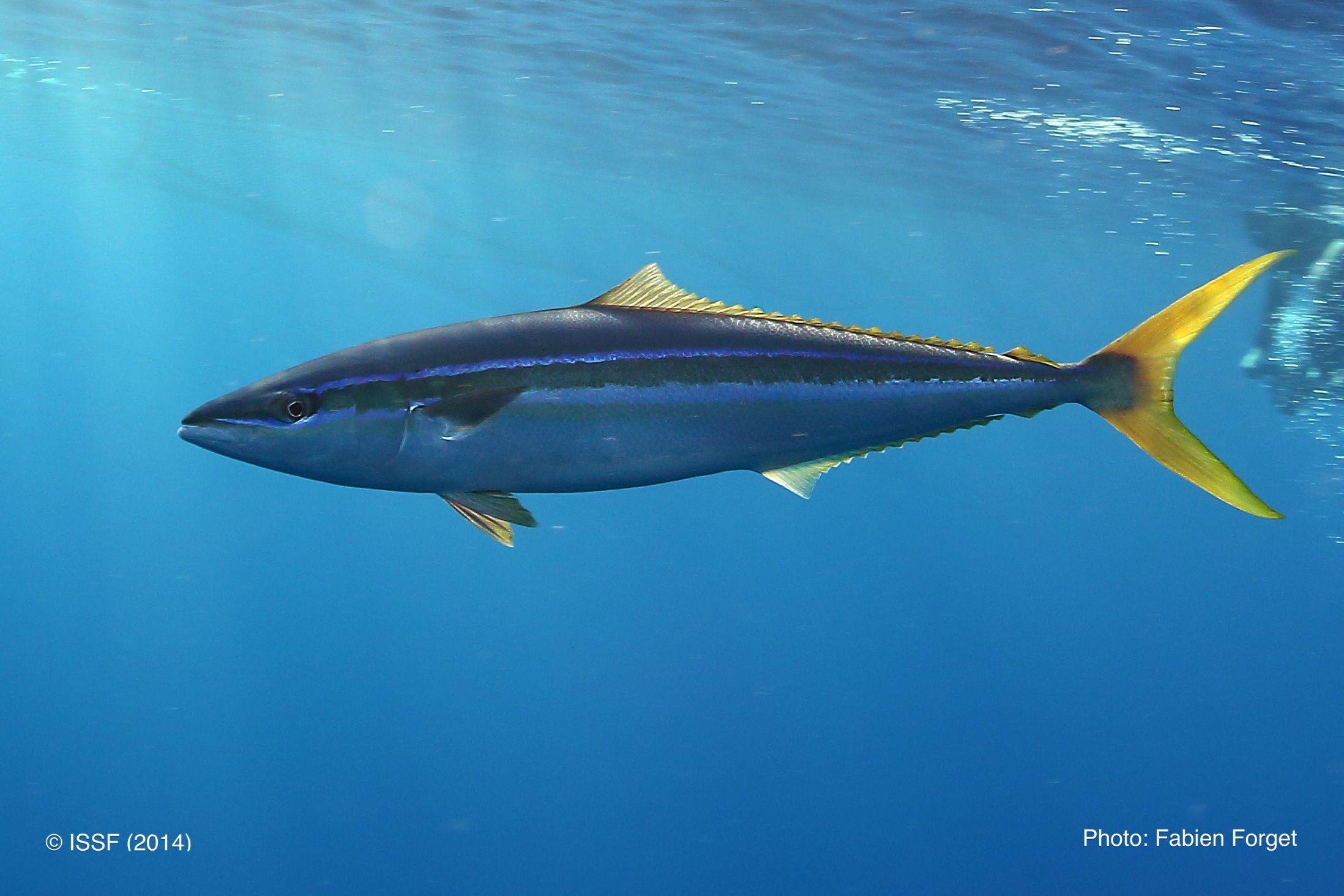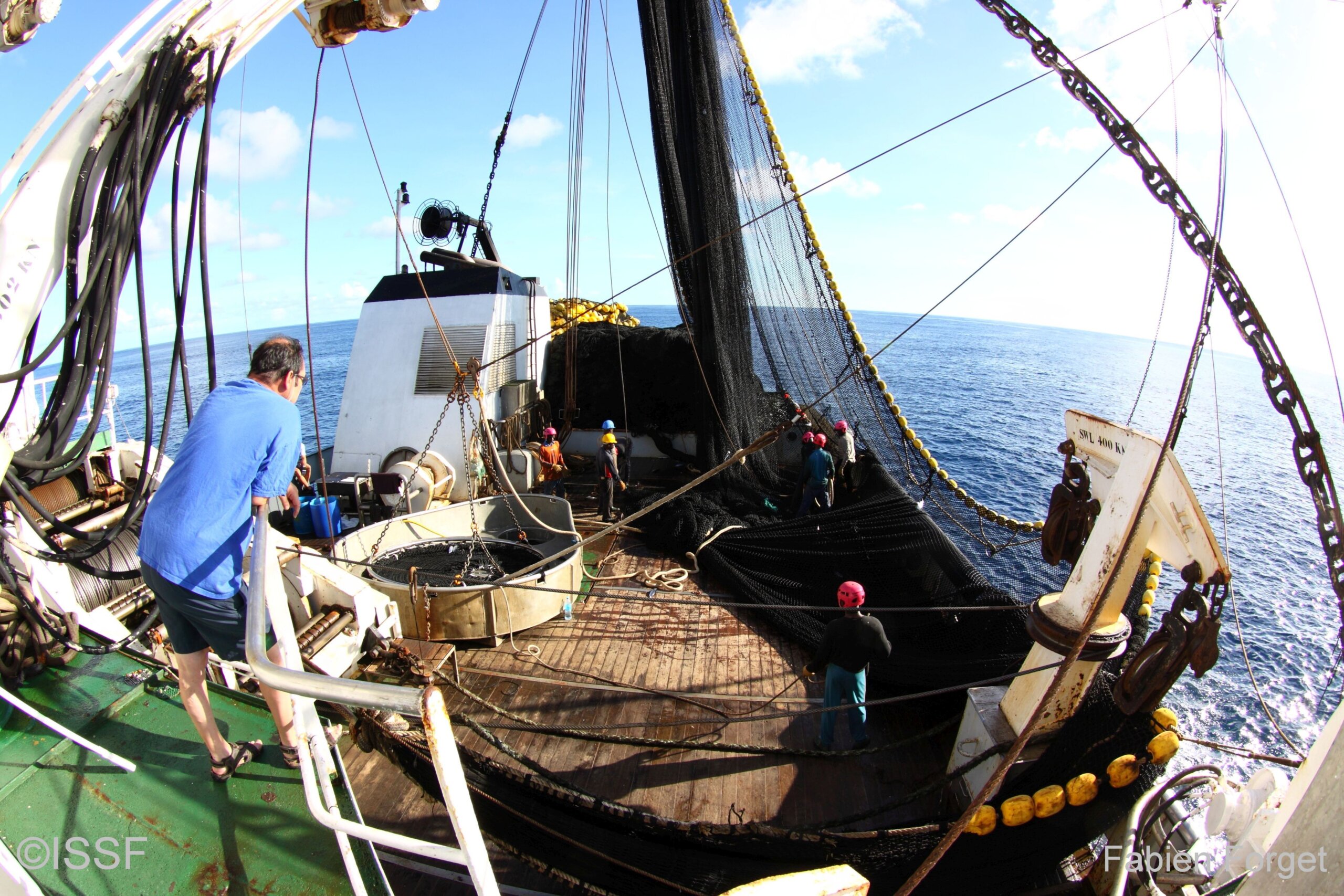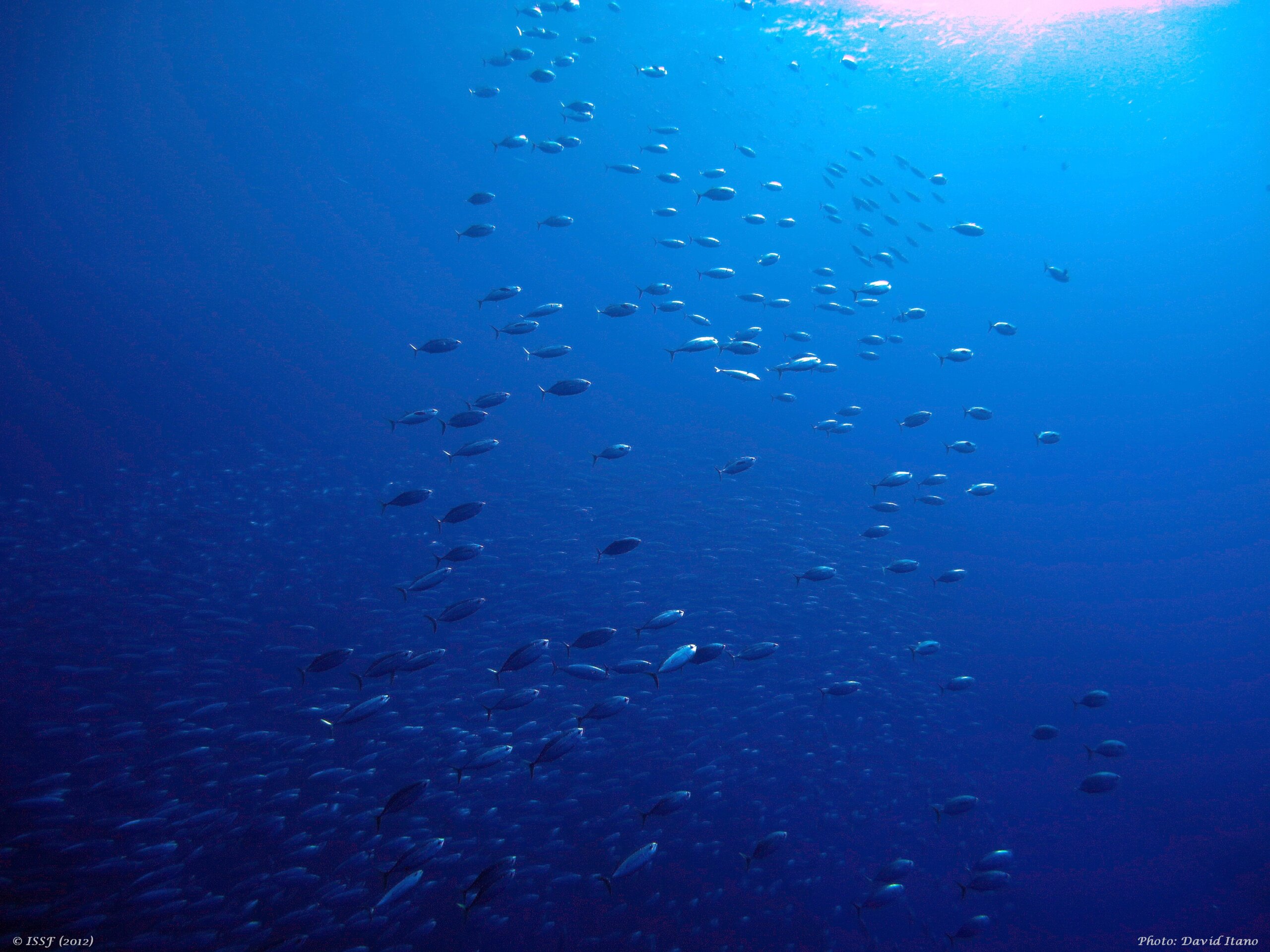
ISSF Position Statement Calls for Better Management of Stocks and Non-entangling FAD Requirements in Western and Central Pacific Ocean (WCPO)
Reducing catches of yellowfin and bigeye tuna and adoption of a non-entangling FAD measure are among the changes advocated for Western and Central Pacific Ocean (WCPO) fisheries by the International Seafood Sustainability Foundation (ISSF) in a position statement submitted for the 14th Regular Session Meeting of the Western and Central Pacific Fisheries Commission (WCPFC) in Manila, Philippines, on December 3-7.
The WCPFC, which oversees tuna stocks in the WCPO, is one of five tuna Regional Fishing Management Organizations (RFMOs). “As the region responsible for more than 60 percent of the global tuna catch, the Western and Central Pacific holds significant responsibility for the sustainable management of global tuna resources,” said ISSF President Susan Jackson. “But the region is not only a leader in tuna catches. It has also shown leadership in sustainability efforts to ensure that the fishery is properly managed and protected.
“While ISSF recognizes this leadership, there is still much work to do in the region, especially with regards to addressing the stock status of yellowfin and bigeye tuna and catching up to their tuna RFMO counterparts by adopting a measure for the use of non-entangling FAD designs.”
Tuna Conservation
While the results of 2017 WCPO bigeye stock assessment were more positive than in recent years, ISSF believes active management needs to continue because there is still a good chance that the stock is below the adopted Limit Reference Point (LRP). Further, the WCPFC Scientific Committee advised that— due to the inclusion of new information on bigeye growth and regional structures—the amount of uncertainty in the stock status results for the 2017 assessment is higher than for the previous assessment.
The 2017 yellowfin assessment indicates that the stock is not overfished or being overfished, but ISSF strongly believes that given uncertainties, the WCPFC should be precautionary and not allow the yellowfin catch rate to increase.
FAD Management and Non-Entangling FAD Designs
Greater data collection is needed on the number of FADs being used and the details of fishing operations on individual FADs in order to better understand fishing capacity changes and likely impacts on WCPFC-managed stocks. That data should then be used to develop science-based FAD management measures.
Jackson continued, “In the WCPO, FAD sets account for about 30 percent of tropical tuna catches. There is a need globally for measures that help better monitor and manage FAD usage in every ocean region. Shark mortality and other FAD-fishing ecosystem impacts in the WCPO also have to be addressed, for which the wide-scale adoption of non-entangling FAD designs is a critical step.”
Comprehensive observer coverage is a critical component of monitoring and management for sustainable tropical tuna fisheries. For large-scale purse seiners, WCPFC implemented a 100 percent observer coverage requirement; the requirement for longline fisheries is only a minimum of 5 percent. The science committees for two other tuna RFMOs have recommended 20 percent longline observer coverage, a level appropriate to provide reasonable estimates of total bycatch. If human onboard observers are not possible for certain fleets or vessel sizes, including longliners, then guidelines for using electronic monitoring should be adopted. ISSF is pleased that in 2016, the WCPFC adopted operational logsheet data standards for electronic reporting and made progress in developing electronic reporting observer data standards.
ISSF is asking WCPFC to increase its observer coverage standards to 20 percent and to finalize the development of the electronic monitoring and reporting standards so that such tools can be used to achieve 100% observer coverage in the longline fishery.
Other priority improvements in the ISSF position statement include:
- Adhere to the updated 2015 harvest strategy work plan and take the decisions necessary this year (e.g., a target reference point for yellowfin tuna and South Pacific albacore, and development of harvest control rules for skipjack, bigeye, South Pacific albacore and yellowfin tuna).
- Reform the compliance assessment process to allow accredited observer participation.
- Amend the transshipment measure in order to address gaps in its effectiveness due to lack of required reporting or advanced notifications.
- Strengthen shark conservation and management by prohibiting the use of shark lines; adopt scientists’ recommended Shark Research Plan and future work plan and the safe release guidelines for rays; adopt a measure to require that sharks be landed with fins still naturally attached to improve compliance and species specific data collection; and direct the Scientific Committee to develop guidelines for the safe release of silky and oceanic whitetip sharks.
Read the full position statement here.
About the International Seafood Sustainability Foundation (ISSF)
The International Seafood Sustainability Foundation (ISSF) is a global coalition of scientists, the tuna industry and World Wildlife Fund (WWF) — the world’s leading conservation organization — promoting science-based initiatives for the long-term conservation and sustainable use of tuna stocks, reducing bycatch and promoting ecosystem health. To learn more, visit https://www.iss-foundation.org/, and follow ISSF on Twitter, Facebook and Instagram.


